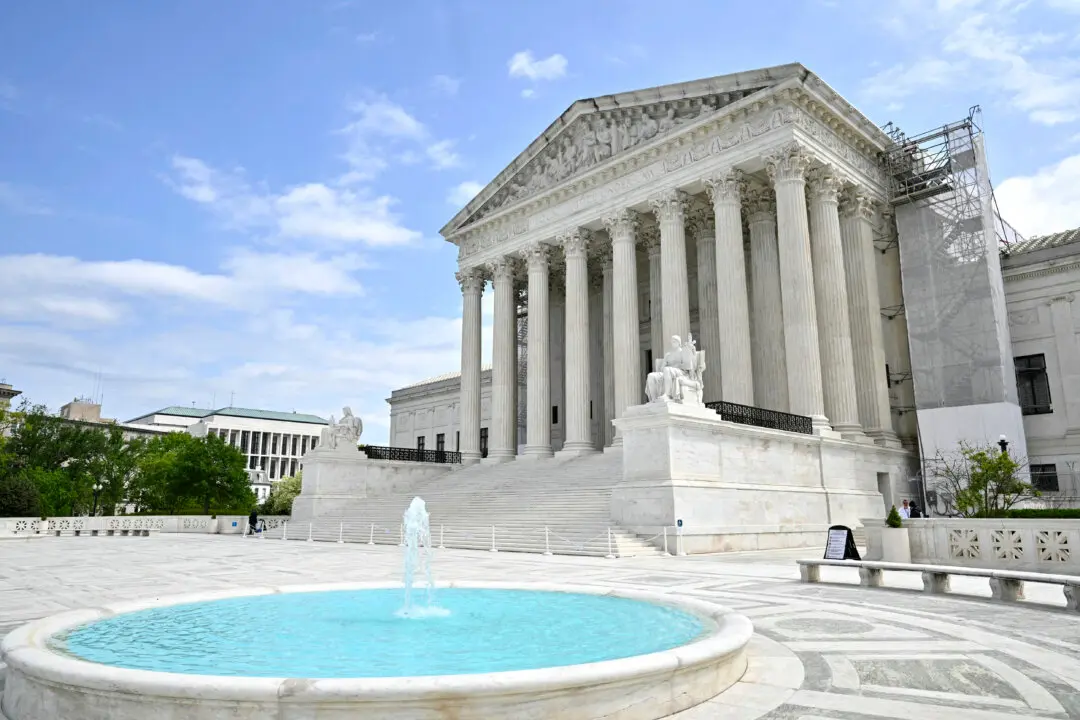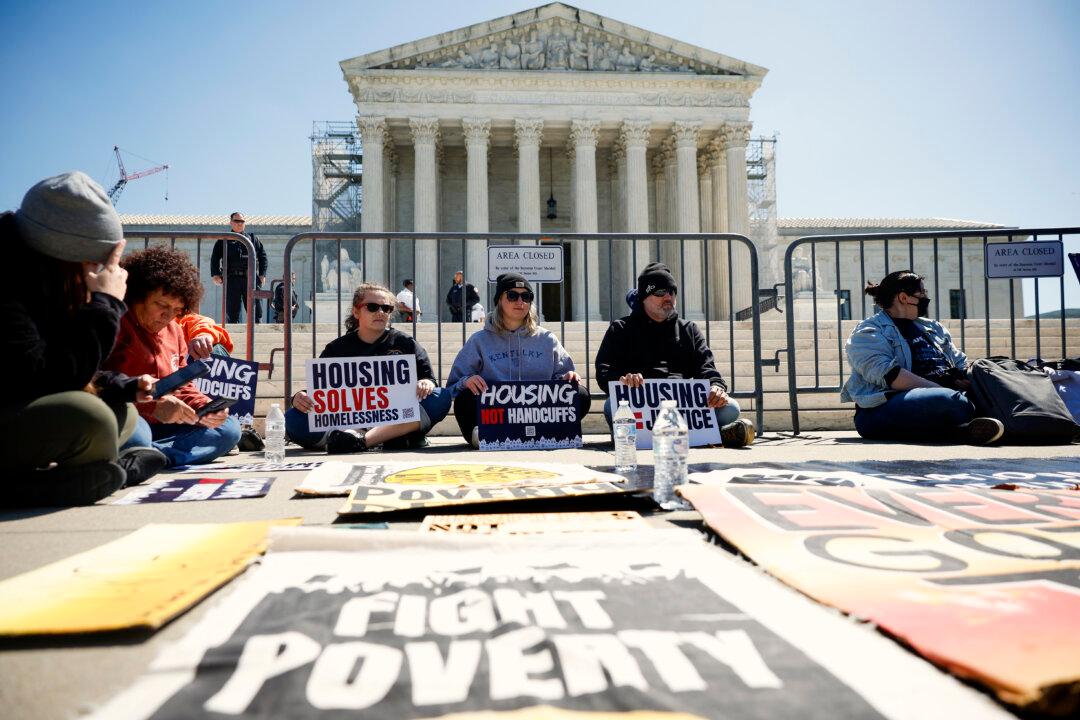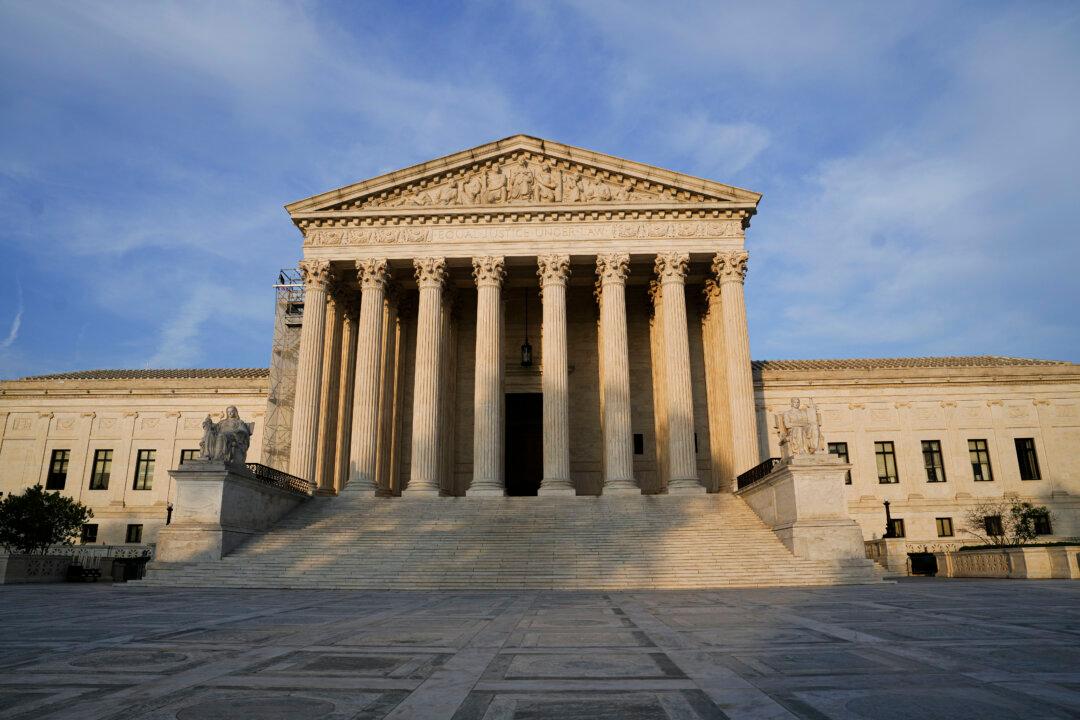The court heard 61 arguments in 69 cases this term (some of the cases were consolidated for oral argument), 20 of which the court has already decided.
The most newsworthy of those cases was the unanimous ruling in Trump v. Anderson, in which the court reversed the Colorado Supreme Court and held that former President Donald Trump could not be removed from the state ballot under Section 3 of the 14th Amendment.
Because, the court said, “the Constitution makes Congress, rather than the States, responsible for enforcing Section 3 against federal officeholders and candidates,” state courts and state officials have no power to remove federal candidates from the ballot.
Opinions in some of the biggest cases, however, have yet to be issued. These cases address issues ranging from government censorship of online speech to abortion drug regulation to Trump’s immunity from criminal prosecution to how much deference courts should give to federal agencies’ interpretations of the scope of their own authority.
The court heard five cases this term that could significantly reshape administrative law and the regulatory state.
In Relentless, Inc. v. Department of Commerce and Loper Bright Enterprises v. Raimondo, for instance, the court will decide how much courts should defer to agencies’ often expansive interpretations of federal law.
In both cases, fishing companies challenged a federal agency’s rule that the companies had to pay for the government to monitor their compliance with federal laws and regulations. A majority of justices appear ready to say that agencies cannot define their own powers by interpreting vague laws however they want. If that happens, this will represent a sea change in the area of administrative law, will curtail the vast power currently exercised by federal agencies, and may well force Congress to write clearer laws in the future.
In another administrative law case, FDA v. Alliance for Hippocratic Medicine, the court will decide a challenge brought by doctors and a medical association against the Food and Drug Administration’s repeal of safety measures that protected women who use mifepristone, a drug commonly known as the abortion pill.
If the court rules for the FDA, it could sidestep the question of whether the FDA violated the law and only hold that the doctors and medical association were not harmed and thus lacked standing to sue. A win for the doctors, however, would bring back the repealed safety restrictions.
And in a third administrative law case, Corner Post Inc. v. Board of Governors of the Federal Reserve System, the court is grappling with the question of when someone can sue because they were harmed by a federal regulation. Under the government’s reading of the relevant statute, a person can sue only up to six years after a regulation is issued—meaning that a company created more than six years later can’t get into court to challenge the regulation.
The court will also decide whether the funding scheme for the Consumer Financial Protection Bureau, or CFPB, is unconstitutional in Consumer Financial Protection Bureau v. Community Financial Services Association, Limited.
The case focuses on whether Congress, in the name of “efficient” solutions to modern problems, can abdicate its fiscal oversight powers by passing a statute that perpetually funds an agency, as it did for the CFPB. If the CFPB prevails, Congress could easily sidestep the democratic process by guaranteeing forever-funding for the entire regulatory state.
Last but not least of the administrative law cases, Securities and Exchange Commission v. Jarkesy presents the court with three questions about the SEC’s enforcement proceedings. The court mostly focused its attention at oral arguments on one question, however: whether George Jarkesy had a right to a jury trial when the SEC brought an enforcement action against him.
For context, the SEC alleged that Jarkesy committed wrongs that look like common law fraud. Thus, when it brought an in-agency enforcement proceeding before agency judges, Jarkesy argued he had a right to a jury trial because he would have that right if a private person sued him for fraud.
The catch is that the court already held years ago that when the government creates and enforces a public right—something given to the public collectively, such as a right to a deception-free securities market—the enforcing agency can decide the case itself without having to face a jury.
If the court chooses to address the jury issue, it will need to address whether Congress can convert a private right into a public one and let the agency have one of its own decide the agency’s enforcement actions.
The court will also decide in three separate cases whether government officials and big tech companies can suppress online speech that they disfavor.In Moody v. NetChoice, LLC and NetChoice, LLC v. Paxton, the court will decide whether Florida and Texas can restrain Big Tech from “deplatforming” online speech (removing users’ content from their websites or apps).
And in Murthy v. Missouri, the court is weighing whether federal officials’ relentless pressure on those companies to suppress disfavored speech was unconstitutional censorship or nothing more than the bully pulpit in action.
Although the justices could side with Florida and Texas in the NetChoice cases without reaching the merits of the cases and instead by deciding them on a procedural question, they appeared skeptical in Murthy that the government violated the First Amendment.
The justices also appeared concerned about the government’s broad reading of a federal statute that the Justice Department is using to prosecute a Jan. 6 defendant in Fischer v. United States. If the court agrees that the federal law covers a narrower range of criminal acts than the government argues it covers, this could have an impact on the pending criminal case against Trump, since two of the four charges in that case rely on the same statute.
Speaking of the former president, the court will decide in Trump v. United States whether Trump enjoys absolute immunity from subsequent prosecution for official acts he took while he was president. Trump’s attorneys are arguing that the only exception would be for acts that led to a president’s impeachment and removal from office.
While Trump was impeached twice while in office, he was acquitted both times by the Senate. A ruling in Trump’s favor would make it very difficult for special counsel Jack Smith to criminally prosecute him for contesting the 2020 election and for Fulton County District Attorney Fani Willis to prosecute him in Georgia as well.
But that’s not all.
In City of Grants Pass v. Johnson, the court appears likely to reverse a Ninth U.S. Circuit Court of Appeals decision that fining a homeless individual for sleeping on public property violates the Eighth Amendment’s cruel and unusual punishment clause.
In Moore v. United States, the justices will decide whether a tax on unrealized wealth—such as an increase in your stock portfolio’s value—is constitutional under the 16th Amendment, which only allows Congress to impose a direct tax on “income.”
The court is also still working on two firearms cases. The first, United States v. Rahimi, poses the question of whether a federal statute violates the Second Amendment by prohibiting a person subject to a domestic violence restraining order from possessing firearms. The second, Garland v. Cargill, will determine whether the Bureau of Alcohol, Tobacco, Firearms and Explosives can define a bump stock device as a “machine gun.”
In yet another chapter of the ongoing controversy over the Environmental Protection Agency’s (EPA) “Good Neighbor Plan”—which imposes national emission standards for certain states that are “upwind” of other states—Ohio, other affected states, and various organizations have asked the court to stay the plan while they challenge it in the D.C. Circuit Court of Appeals.
The plan, they point out in four consolidated cases (captioned Ohio v. Environmental Protection Agency), was designed for 23 states, but a dozen of those states, and three-quarters of the emissions the plan would have originally regulated, are now exempt. Among the potential costs the challengers point out as justifying a stay is the likelihood that compliance would trigger power-grid emergencies.
Finally, in Alexander v. South Carolina State Conference of the NAACP, the court will decide South Carolina state officials’ appeal of a decision from a three-judge district court panel that held that the state’s Congressional District 1 was racially gerrymandered.
The officials argued that the panel concluded that partisan gerrymandering—which is permissible under the Constitution—was racial gerrymandering by wrongly inferring that a correlation between race and politics meant that race was the true basis for the election map.
If you feel overwhelmed, that is only a snapshot of some of the remaining cases this term.And if some (or many) of them seem rather partisan or controversial, keep in mind that the Supreme Court frequently hands down rulings that are not decided on partisan lines—such as its unanimous judgment earlier this term that Colorado cannot unilaterally remove Trump from the ballot.
At the end of the day, no one but the justices and their clerks know what the results are in the cases still to be handed down or when those opinions will be released.
But one thing is certain: It will be a historic end to an already historic term.
Reprinted by permission from The Daily Signal, a publication of The Heritage Foundation.



